2023 Next Generation Water Summit
Thursday, June 15 - Friday, June 16
9:00 am to 5:00pm MT
 06/15/2023 08:45 am
06/15/2023 08:45 am
Adel Hagekhalil
General Manager

Room: O'Keeffe
Adel Hagekhalil, General Manager of the Metropolitan Water District in Southern California, will discuss his experience on both reuse and conservation, as well as his assertion that securing water resilience through a lens of water totality is the primary solution.
 06/15/2023 10:15 am
06/15/2023 10:15 am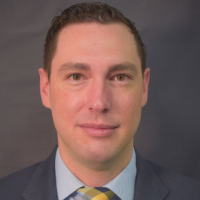
Rick Maloy
Water Conservation Manager - Central Utah Water Conservancy District

Dawn Walker-Hughes
Senior Water Conservation Specialist - El Paso Water

Room: O'Keeffe
Water conservation is key to our future water supplies. Both El Paso and Central Utah Water Conservancy Districts have active water conservation programs. Building these programs has taken time. In this session, you will learn about these programs and the challenges they face to continue to drive down water use.
 06/15/2023 11:30 am
06/15/2023 11:30 am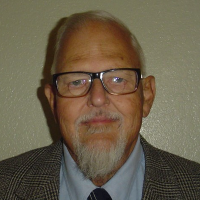
Bill Hoffman
President, H.W.(Bill) Hoffman & Associates, LLC

Room: Peralta
Use or withdrawal is the amount of water withdrawn from a surface or groundwater source for beneficial use. Consumption is the amount of
that water which is not returned to the environment through a wastewater facility or recognized discharge point. Water conservation efforts, like onsite graywater and blackwater reuse, reduce consumption and therefore can be at odds with centralized water reuse efforts.
This presentation will review the reality of these conflicting goals.
 06/15/2023 11:30 am
06/15/2023 11:30 am
Liesel Hans
Director of Programs, Alliance for Water Efficiency

Room: DeVargas
The Alliance for Water Efficiency’s 2022 U.S. State Policy Scorecard for Water Efficiency and Sustainability (Scorecard) evaluated and ranked each U.S. state based on its adoption of laws and policies that advance water efficiency, conservation, sustainability, and affordability. With climate change reducing and interrupting water supplies across much of the United States, there is an urgent need to increase investments in water efficiency and conservation, which are typically the fastest and least expensive ways to save water. Water efficiency also helps build resilience to extreme weather events that are increasing in frequency and duration because of climate change. The Scorecard is intended to encourage state action by identifying exemplary laws and policies as well as opportunities for improvement. States can advance water efficiency by providing financial assistance and adopting policies and requirements that help ensure best practices are implemented. State policy and funding influence water use through water agencies, land use authorities, energy companies, developers and builders, businesses, and the general public. As a result, state policy is an important tool to shape our water future. Join this session to learn how the western states fared in this edition of the Scorecard and where we hope see action in the coming years.
 06/15/2023 01:00 pm
06/15/2023 01:00 pm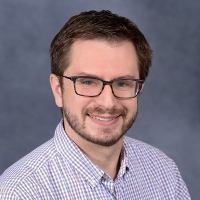
Justin Mattingly
Water Reuse - Office of Water at US EPA

Room: DeVargas
Through this presentation, participants will learn about key drivers behind growing national interest in SCU and important challenges to widespread SCU and gain a clear sense of how those drivers and challenges related to the potential benefits of an SCU program. Participants will also learn about key policy, research, and capacity building actions identified during a first of its kind national meeting of SCU experts and thought leaders convened by EPA. These findings and recommendations have guided future efforts through EPA as part of the WRAP and affiliated efforts to build national SCU expertise and capacity with the goal lowering barriers to progress at the federal, state, and local levels.
 06/15/2023 01:00 pm
06/15/2023 01:00 pm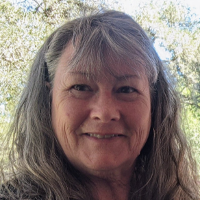
Martha Davis
Former Assistant General Manager - Inland Empire Utilities Agency

Room: Peralta
In our climate-changed world, Mono Lake illustrates the need for bold local actions to protect and restore distant ecosystems that support both wildlife and people. Too often, drought-driven water shortages are viewed as a trade-off between environmental and human needs. From my perspective as a former water agency executive and an environmental advocate, we need to build climate-resilient water supplies from the bottom up, integrating water efficiency, rainwater capture and watershed management with more traditional centralized projects to meet both human and environmental needs.
 06/15/2023 02:00 pm
06/15/2023 02:00 pm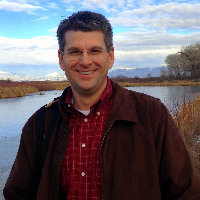
Tony Caligiuri
President and CEO of Colorado Open Lands

Room: Peralta
Innovations in water conservation in Colorado, including along the Colorado River. New tools like conservation easements that encumber water rights, ground water conservation agreements to benefit river flows and water sharing agreements between municipal and agricultural users as well as a major shift has occurred in land and water conservation as the value of water rights has skyrocketed.
 06/15/2023 02:00 pm
06/15/2023 02:00 pm
Laura Allen
Co-Founder, Greywater Action

Doug Pushard
Founder, KUELWater, LLC

Room: DeVargas
Water reuse is not optional in the west. Even household graywater is often an untapped resource, yet it can extend our existing water supplies. This presentation will highlight key western states and show how regulations can promote or discourage the uptake of this critical resource. We’ll also cover programs, incentives, and the future direction of the graywater market.
 06/15/2023 03:00 pm
06/15/2023 03:00 pm
Hope Medina
Energy/Green Code Consultant

Mike Collignon
Executive Director - Green Builder Coalition

Room: Peralta
As water supply concerns mount in the West, residents naturally also have questions about the role of building and development. What are municipalities and jurisdictions doing to address these two pressing issues? We'll discuss in this engaging conversation.
 06/15/2023 03:00 pm
06/15/2023 03:00 pm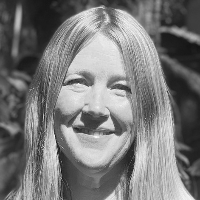
Regina Hirsch
Executive Director at Watershed Progressive

Room: DeVargas
Demand hardening is a term that is widely used in the industry to define how low it is possible to go in regards to daily household water use (GPCD). Communities are using this target to plan future water demands. But is today's threshold of demand hardening realistic of tomorrow's threshold? This presentation will cover what is considered to be today's low threshold and what may be possible in the future.
 06/15/2023 04:00 pm
06/15/2023 04:00 pm
Louie Trujillo
Mayor – Las Vegas, NM

Glenn Schiffbauer
Executive Director – Santa Fe Green Chamber of Commerce

Room: O'Keeffe
Water is a critical resource to the viability of cities in the West. With growth, the drought, and diminishing supplies of locally sourced water, it is not guaranteed to always be there. What happens if it is not there?
Las Vegas, NM found itself in this situation, and in this conversation with the Mayor of Las Vegas, you will hear first-hand how this situation played out and the extraordinary measures taken to address it.
 06/16/2023 08:45 am
06/16/2023 08:45 am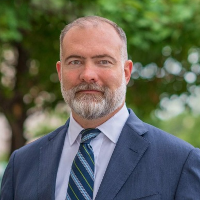
Tommy Beaudreau
U.S. Deputy Secretary of the Interior

Room: O'Keeffe
As the Deputy Secretary of the Interior, Mr. Beaudreau plays a pivotal role in shaping the nation's natural resource policies, including water management strategies, environmental protection, and land stewardship.
Deputy Secretary Beaudreau will highlight the ongoing steps the Biden-Harris administration is taking to improve and protect the stability and sustainability of the Colorado River System and strengthen water security and conservation efforts across the West.
 06/16/2023 10:15 am
06/16/2023 10:15 am
Laureen Blissard
Technical Director - Green Builder Coalition
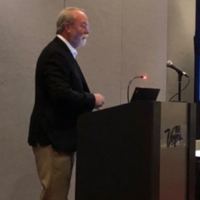
Darrel McMaster
CEO, Sustainable Homes

Room: DeVargas
With drought and water shortages affecting close to 1/3 of the U.S. population, we will take a look at building homes that generate 100% of their water on-site as well as possible sources that normally may not be considered. Additionally, the methodology used to model usage, capture, and reuse will be discussed.
We will also examine the correlation between the amount of water required to generate power and the amount of power embedded in water, and how our homes can address both issues.
 06/16/2023 10:15 am
06/16/2023 10:15 am
Doug Pushard
Founder, KUELWater, LLC

Zacariah Hildenbrand
Chief Scientific Officer at Infinity Water Solutions

Room: Peralta
Water, regardless of source, is precious. Due to the prolonged drought in the west, reusing all water is required. With today's latest technology, it is now possible to reclaim water from any source for any use. This reuse opens up many possibilities of cleaning and reusing any
decentralized source of water. This new paradigm increases the complexity of today's water systems and will require a new level of
sophistication in distribution and water IT systems. Artificial intelligence can play an important role in this new world of water.
 06/16/2023 11:30 am
06/16/2023 11:30 am
Christoph Lohr
Vice President of Strategic Initiatives - IAPMO

Room: DeVargas
In 2018, IAPMO released the Water Demand Calculator (WDC) in Appendix M of the Uniform Plumbing Code. This revolutionary peak flow rate calculator was the first time in almost 80 years that domestic water systems inside the built environment could be sized differently from the Hunter's curve. The Hunter's Curve estimated peak flow rates by assuming every building operated like a sports stadium at half time. At that time, it was a revolutionary approach, but it was also a 20th Century solution and a 21st century solution is needed. IAPMO, partnering with the University of Cincinnati and ASPE worked for almost a decade to create the WDC by collecting real data of how plumbing system "behavior" in residential homes. What was validated was the long-time hypothesis that plumbing fixtures are not used as frequently in homes. The result: smaller piping systems could be used when using the WDC in lieu of the Hunter's curves, with the potential savings increasing exponentially as the number of units increased (e.g. high-rise residential buildings). But there were a number of potential second order effects: lower construction costs as a result of smaller piping, less water usage as less water is stored and displaced, and finally lower energy usage stemming from less heat transfer from smaller piping and smaller pumps. By right-sizing domestic water distribution systems we can have numerous benefits to the environment, saving water, and potentially reduce the carbon footprint of the built environment.
 06/16/2023 11:30 am
06/16/2023 11:30 am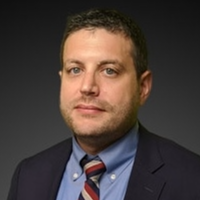
Jonah Schein
U.S. Environmental Protection Agency’s (EPA) WaterSense® Program

Room: Peralta
In 2023, the building industry exists at the center of three crises; a housing shortage, a need to invest and upgrade infrastructure, and persistent drought and aridification. On top of this, with more than 15% of retail energy use being associated with water, no real effort toward decarbonization can be complete without addressing water use. Now in its second year since launch, Version 2 of the WaterSense labeled homes program provides a proven template for producing water efficient yet cost-effective homes. Be it a single home, or savings being considered at a community wide scale, learn how the program is being used and how it can impact plans for the future.
 06/16/2023 01:00 pm
06/16/2023 01:00 pm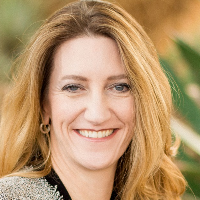
Carol Ward
Deputy Assistant Director, Water Planning & Permitting Division - Arizona Department of Water Resources
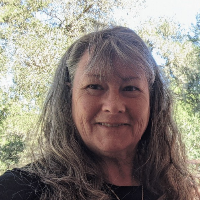
Martha Davis
Former Assistant General Manager - Inland Empire Utilities Agency

Room: Peralta
Declining Colorado River water is driving the need to find new ways to stretch our water supplies. This session will focus on forward-looking efforts in Arizona and California to further increase efficiency, capture and reuse water, and reduce demand in the municipal sector.
 06/16/2023 01:00 pm
06/16/2023 01:00 pm
Michael Broussard
Environmental Health Bureau Liquid Waste Program Manager - State of New Mexico
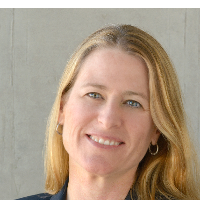
Paula Kehoe
Director of Water Resources - San Francisco Public Utilities Commission and Chair - National Blue Ribbon Commission for Onsite Non-Potable Water Systems

Room: DeVargas
Reusing water is now on the table as part of the solution to our ongoing water needs in the west. In this presentation, you will hear how it is part of the solution, through a unique decentralized approach, in San Francisco. Additionally, the presentation will cover ongoing work and examples by the Blue Ribbon Commission to increase the reuse of blackwater. The presentation will conclude with an overview of the residential blackwater reuse program in New Mexico and its wide adoption.
 06/16/2023 02:00 pm
06/16/2023 02:00 pm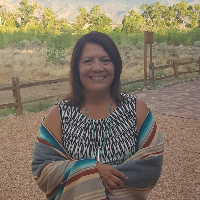
Cathy Newby
Director of Tribal Government and Customer Engagement - PNM

Room: Peralta
The focus of this presentation is on PNM transferring over critical water infrastructure from the now decommissioned San Juan Generating Station for the Navajo-Gallup Water Supply Project and the delivery of life-changing municipal drinking water relief to our Navajo tribal communities that continue to face dire water supply scarcity. The San Juan River is viewed by Navajo people as the lifeblood for the land, for spiritual practices, farming and clean water for daily use. This project celebrates this big step forward towards the much-needed water improvements for Navajo people, their communities and surrounding communities, and Mother Earth. Operating in the arid Southwest, we understand the importance of protecting and managing scarce water resources. The San Juan Generating Station’s water infrastructure that includes a diversion channel and pumping station on the San Juan River where the water is diverted and pumped eight miles up to a large reservoir where water can be stored. The presentation will review the life changing work done through this project and how PNM is taking action to protect the environment and conserve natural resources while building a clean, secure, and sustainable energy future.
 06/16/2023 02:05 pm
06/16/2023 02:05 pm
Michelle Maddaus
President of Maddaus Water Management Inc.

Room: DeVargas
Saving water in the commercial sector is very possible. This presentation will cover the importance of including the commercial sector in water efficiency programs. Sophisticated tools, methods and innovation give communities the ability to find new ways to save water. This presentation includes a big picture vision of the Commercial Water Efficiency Assessments using AMI, including examples.
 06/16/2023 03:00 pm
06/16/2023 03:00 pm
Amanda Hatherly
Senior Manager for Workforce Education & Training - RHA

Room: Peralta
In this presentation, attendees will dive into the water-energy nexus and explore the efficiency of various residential hot water systems, considering both their energy consumption and the water footprint associated with different energy production methods. We will examine the environmental and economic implications of choosing a suitable hot water system, taking into account the embedded water savings through reduced energy usage. Join us to learn how making informed choices about water heating can contribute to a more sustainable future.
Learning Objectives:
 06/16/2023 03:00 pm
06/16/2023 03:00 pm
Mike Collignon
Executive Director - Green Builder Coalition

Laureen Blissard
Technical Director - Green Builder Coalition

Room: DeVargas
By now, you've heard of a water rating. But did you know that a water rating tool can do so much more than that? It can be used for tank sizing, irrigation design, water audits and even fixture modeling. If you think that water rating software is just for water ratings, then attend this session to learn what all they can do for you.
 06/16/2023 04:00 pm
06/16/2023 04:00 pm
Glenn Schiffbauer
Executive Director - Santa Fe Green Chamber of Commerce

Doug Pushard
Founder, KUELWater, LLC

Mike Collignon
Executive Director - Green Builder Coalition

Room: DeVargas
In this closing plenary, the Summit co-founders will recap the key takeaways from the 2023 Summit and solicit input for the 2024 NGWS.
 06/16/2023 10:15 am
06/16/2023 10:15 am
Patrick McCarthy
Water Policy Officer - Thornburg Foundation

Room: Coronado
 06/16/2023 11:30 am
06/16/2023 11:30 am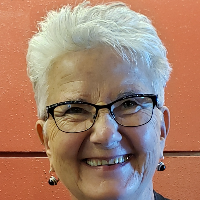
Liz Stefanics
New Mexico State Senator

Room: Coronado
This presentation will focus on 2023 water management legislation, the funding approved, and an overview of forward-looking actions being taken to reform water governance structures, agencies, and mechanisms to secure our waters future.
 06/16/2023 01:00 pm
06/16/2023 01:00 pm
Carol Romero-Wirth
Santa Fe City Councilor

Melanie Stansbury
United States Representative - NM

Room: Coronado
Congresswoman Stansbury will be talking about current water issues with Councilor Romero-Wirth, particularly those in the West. She will discuss federal legislation and what it means for New Mexico.
 06/16/2023 02:00 pm
06/16/2023 02:00 pm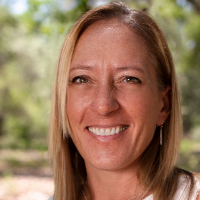
Stacy Timmons
Associate Director, Hydrogeology Programs - New Mexico Bureau of Geology and Mineral Resources

Room: Coronado
This session will provide an update on the work involved in implementing the New Mexico Water Data Act, legislation that passed in 2019 guiding state agencies to collaborate on making key water data more accessible and usable. It will highlight several ways people can search for water data, and also discuss some of the challenges and successes in this multi-year, interagency endeavor.
 06/16/2023 03:00 pm
06/16/2023 03:00 pm
Christine Chavez
City of Santa Fe Water Conservation Manager

Room: Coronado


Reese Baker
Owner - The Raincatcher Inc.

International urban environments are a major contributor to the current water crisis. The same impermeable surfaces in cities designed to efficiently move stormwater away from high traffic areas are the same surfaces that prevent groundwater from recharging and moving various pollutants, e.g. petroleum products, microplastics, pesticides/herbicides, heavy metals, E. coli, etc., downstream and away from populated areas. However, Rain Gardens allow for the capture of stormwater and pollutants to infiltrate the ground downstream and seep through plants, soil microbes, and soil fungi.


Mary Ann Dickinson
Founder, Dickinson Associates

Mike Collignon
Executive Director - Green Builder Coalition

The nexus between water and land use is critical to sustainable development, yet the relationship between these two efforts is often tangential at best. This session explores ways to break down the existing siloes between these two inter-dependent endeavors.


Joshua Harmon
Energy and Sustainability Inspector

Social media engagement training would equip participants with the essential skills and knowledge needed to communicate in the dynamic world of social media. By exploring the successes and growing pains of the ICC’s Membership Councils and other ICC chapters, the participant will gain a deeper understanding of effective communication strategies and techniques to engage audiences, build a stronger online presence, and ultimately identify ways to drive meaningful interactions with the public and other industry partners/program users.
We will discuss existing social media platforms (i.e. Facebook, Instagram, Twitter, LinkedIn, and YouTube) and provide concepts for consolidating printed and traditional media to streamline and maximize staff resources.

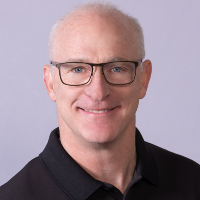
Dustin Glist
Technical Advisor - Airlite Plastics Co.

Onsite Storm Water Management (SWM) is becoming increasingly important and, in many cases, mandatory. Concerns regarding municipal sewer system performance and watershed health have generated numerous requirements and techniques to mitigate the effects of storms at the local or site level. Following an overview of these issues, this course examines (in detail) a high-performance system of permeable plastic paving grids that addresses such issues while meeting the most stringent demands of onsite traffic, aesthetics, and SWM. This examination includes installation techniques, details, and specifications.